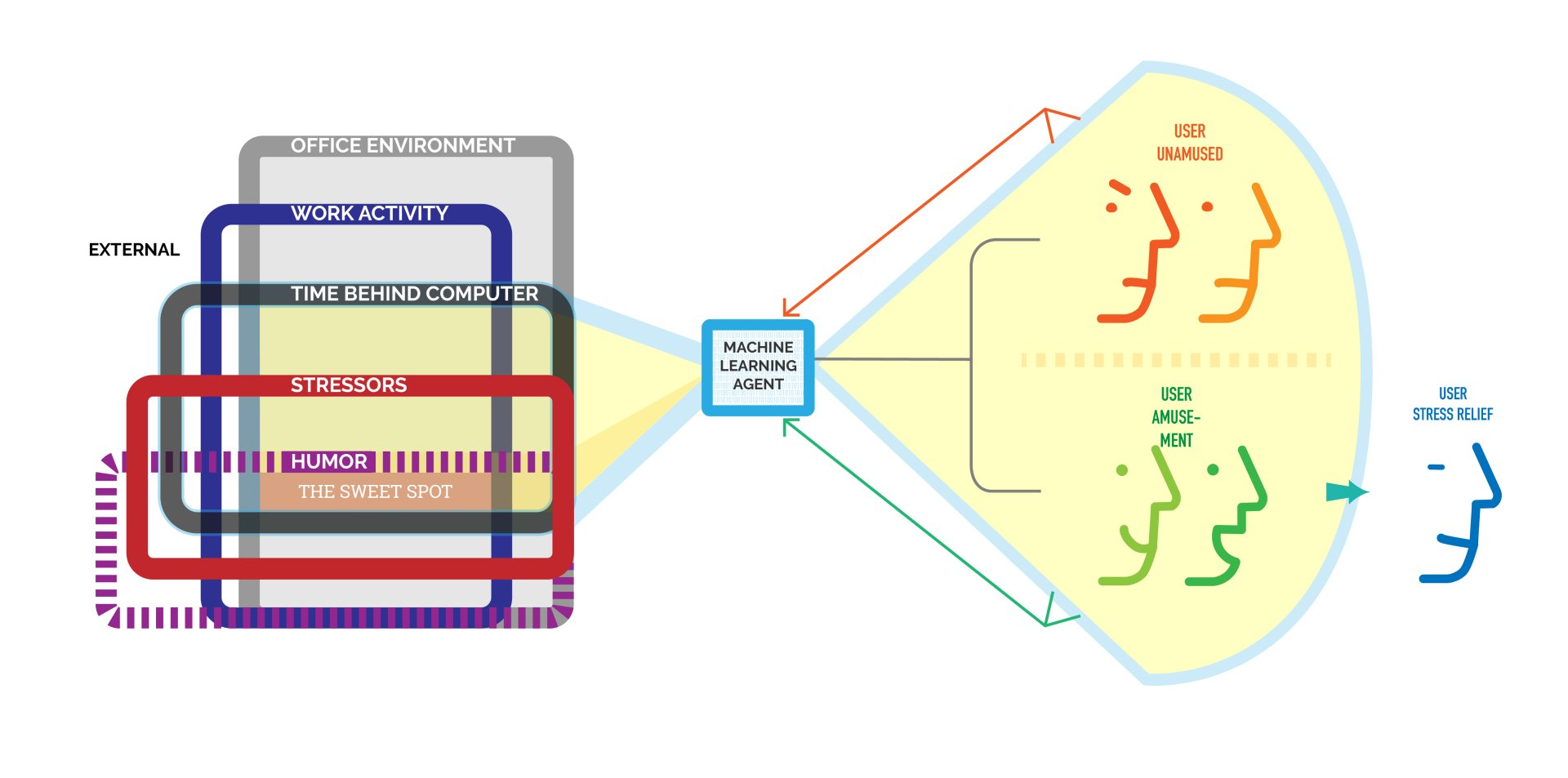Can A.I. Learn to Make You Laugh?
For my master's final project I wanted to explore how machine learning could be designed to create effective humor for stress reduction at work. This required a ton of research to address many unanswered questions, such as "what makes something funny?" before designing for the big question.
Gathering Academic Insight
Humor in Environments
Therapy with Humor
Humorous CUI’s & Digital Interaction
Stress via Work & Tech
ML Stress Detection
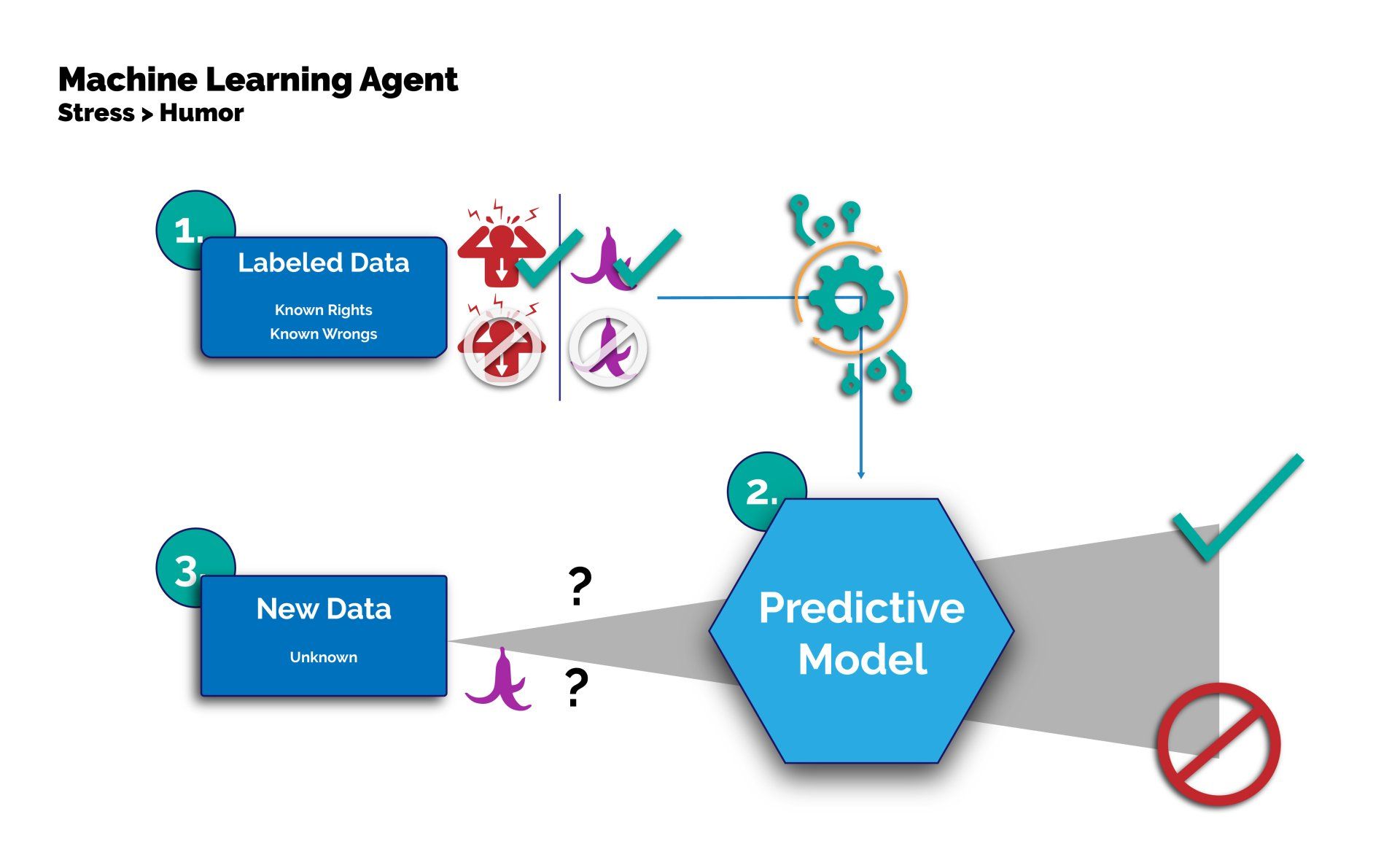
Slide title
Write your caption hereButton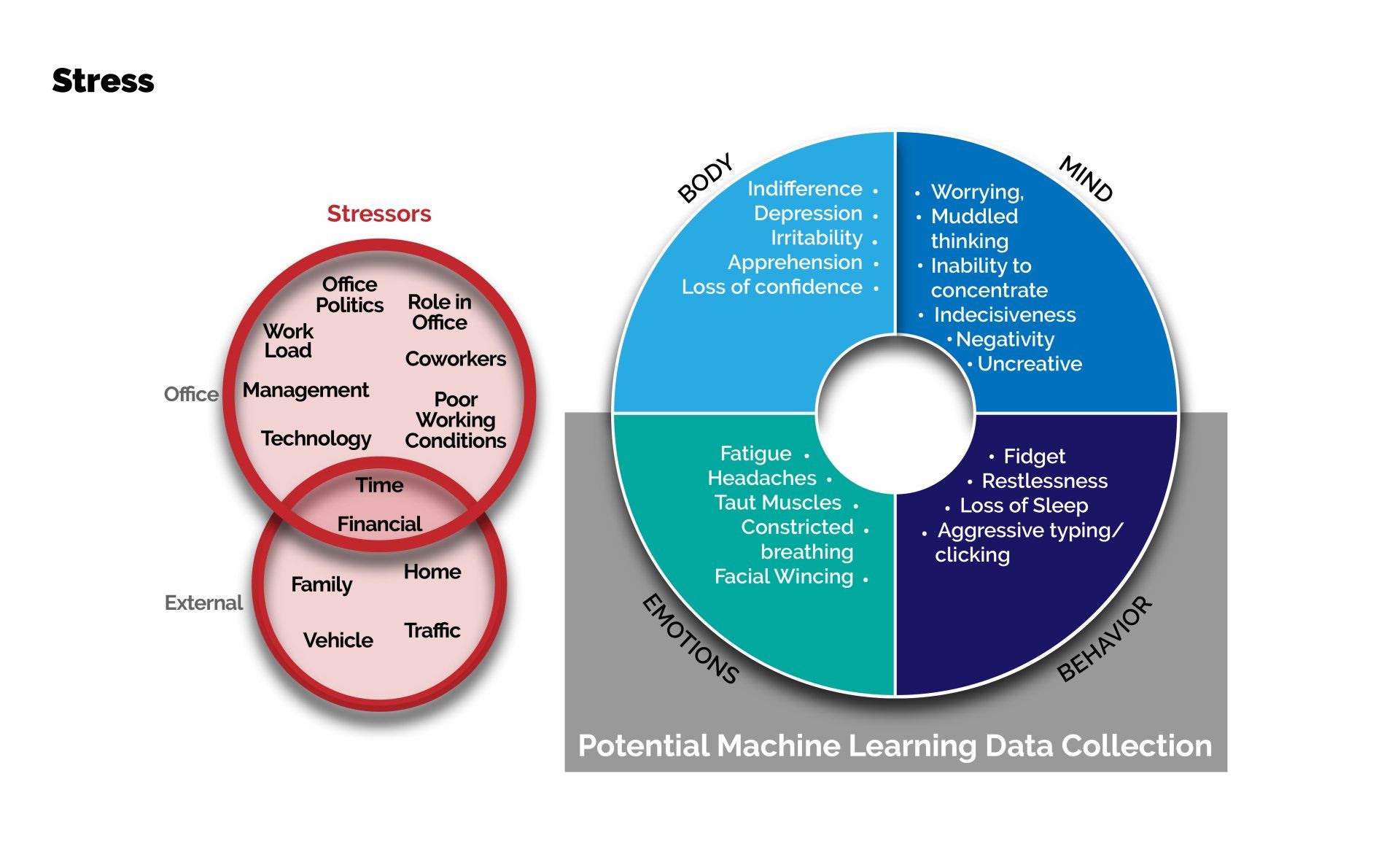
Slide title
Write your caption hereButton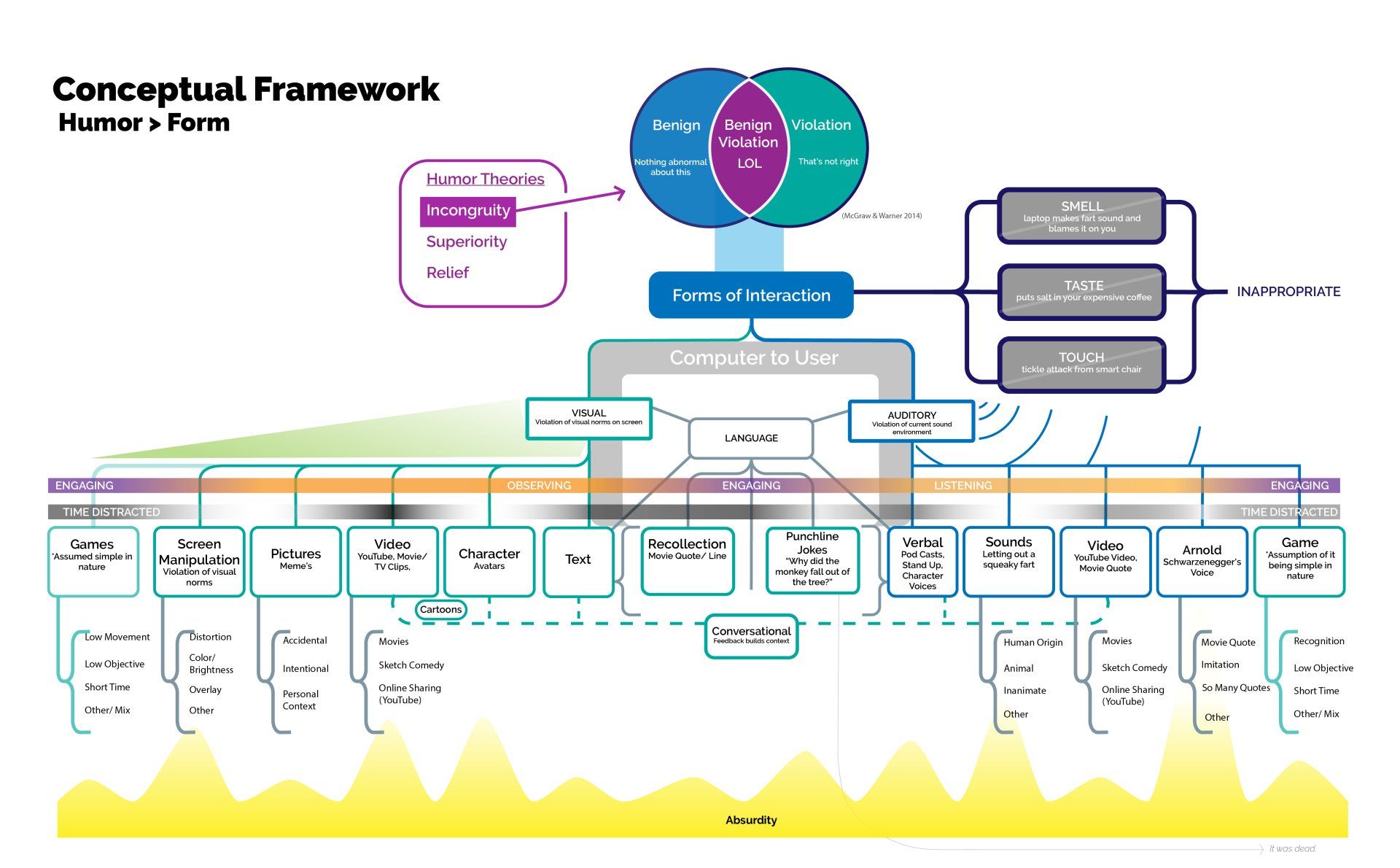
Slide title
Write your caption hereButton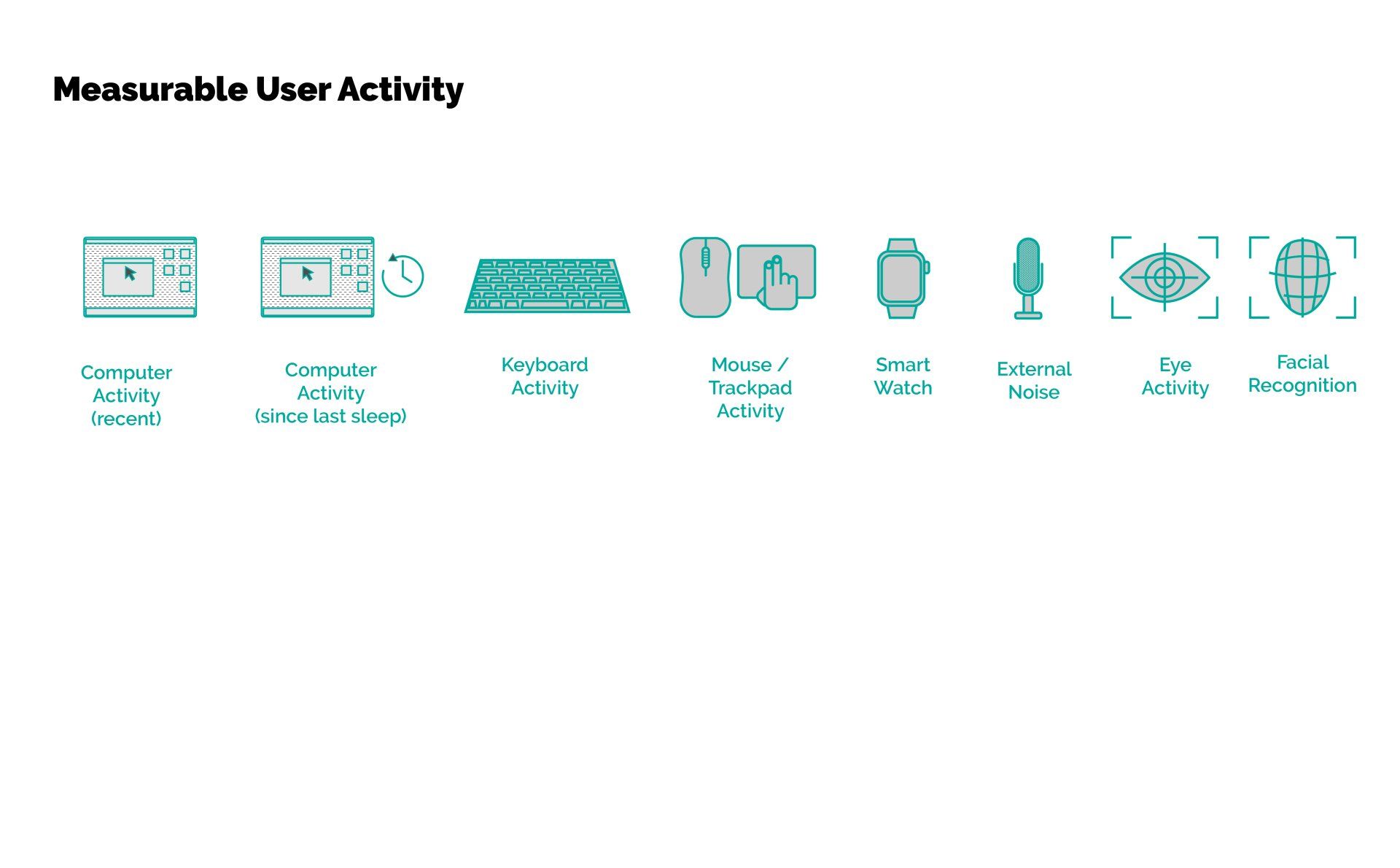
Slide title
Write your caption hereButton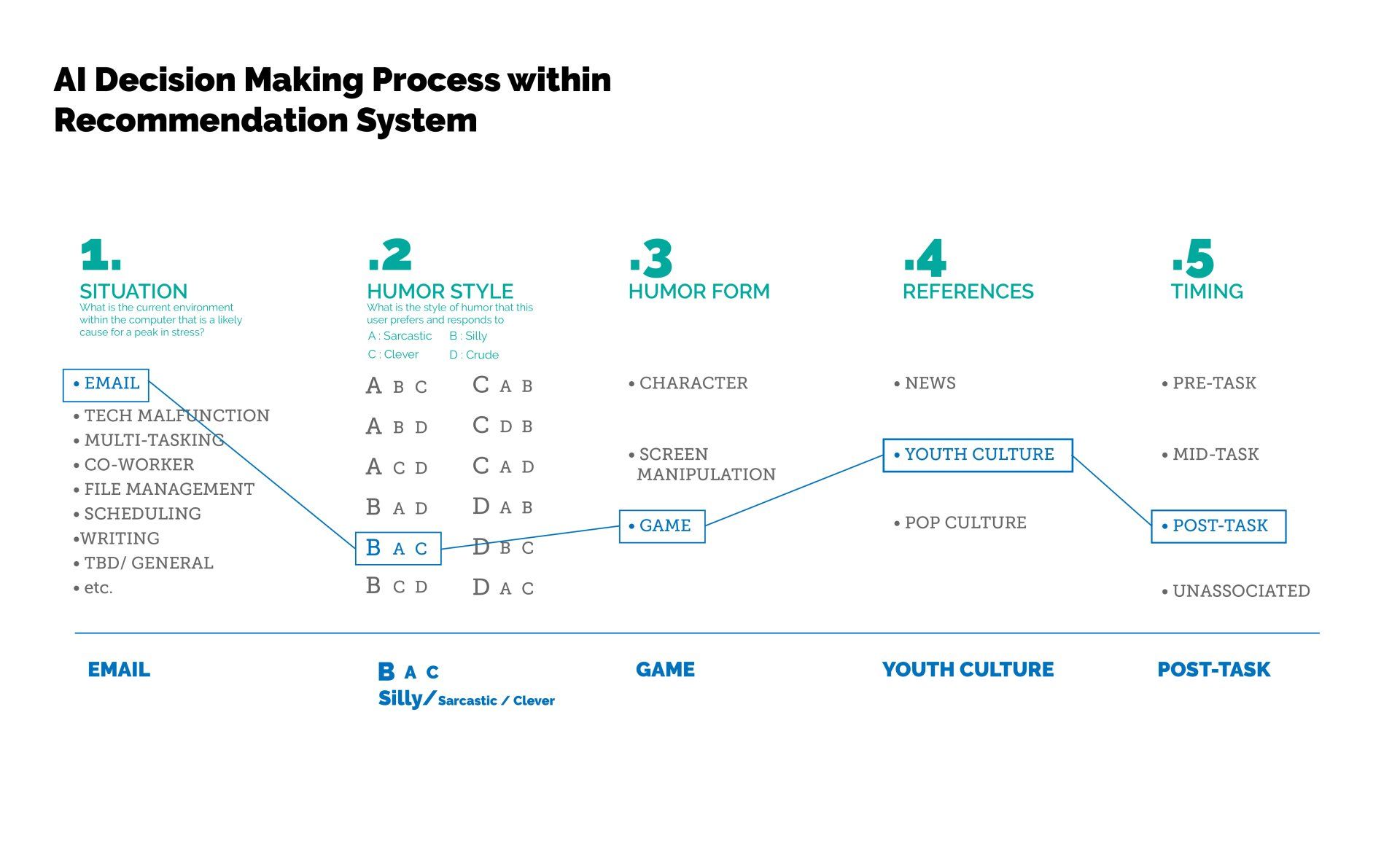
Slide title
Write your caption hereButton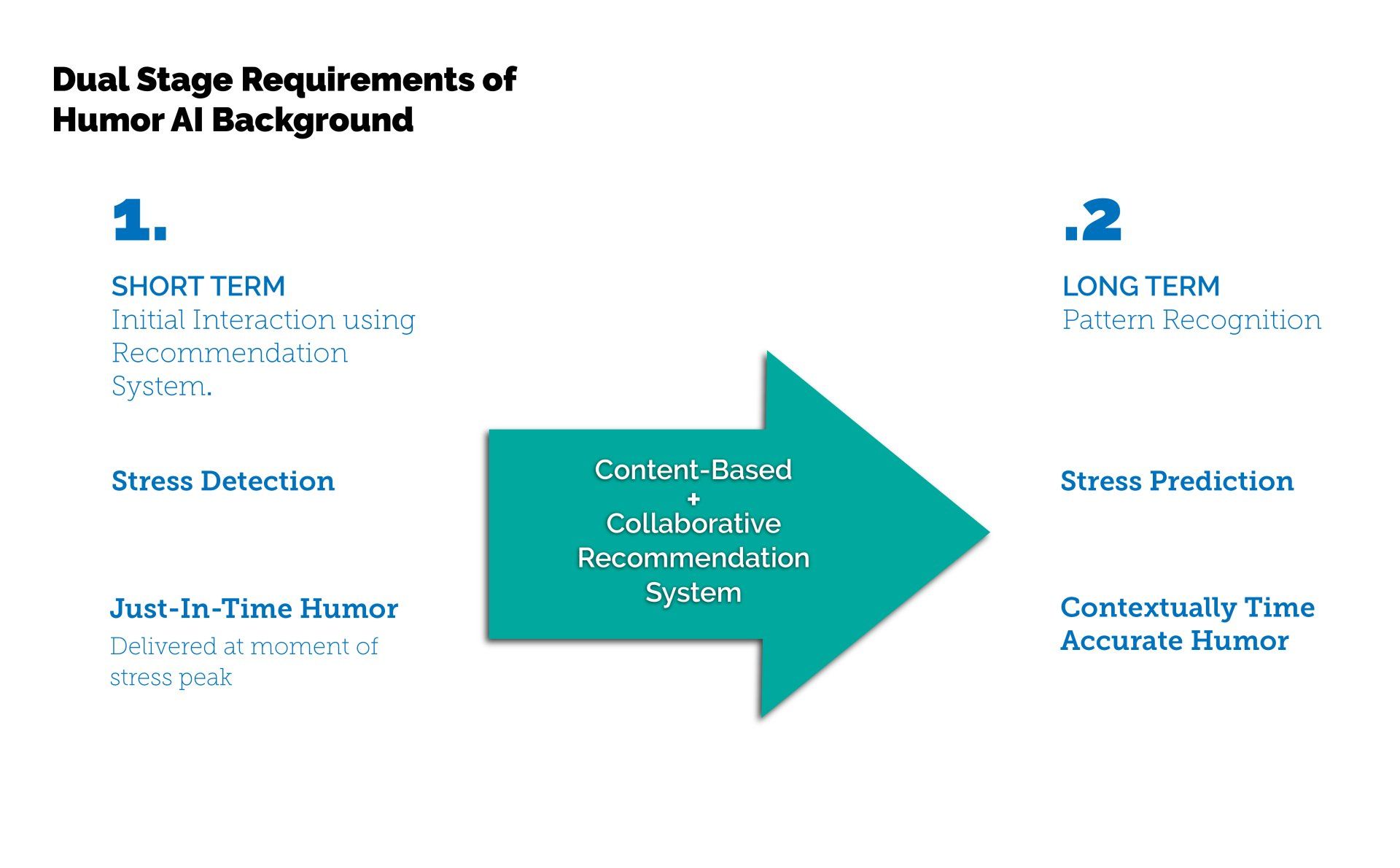
Slide title
Write your caption hereButton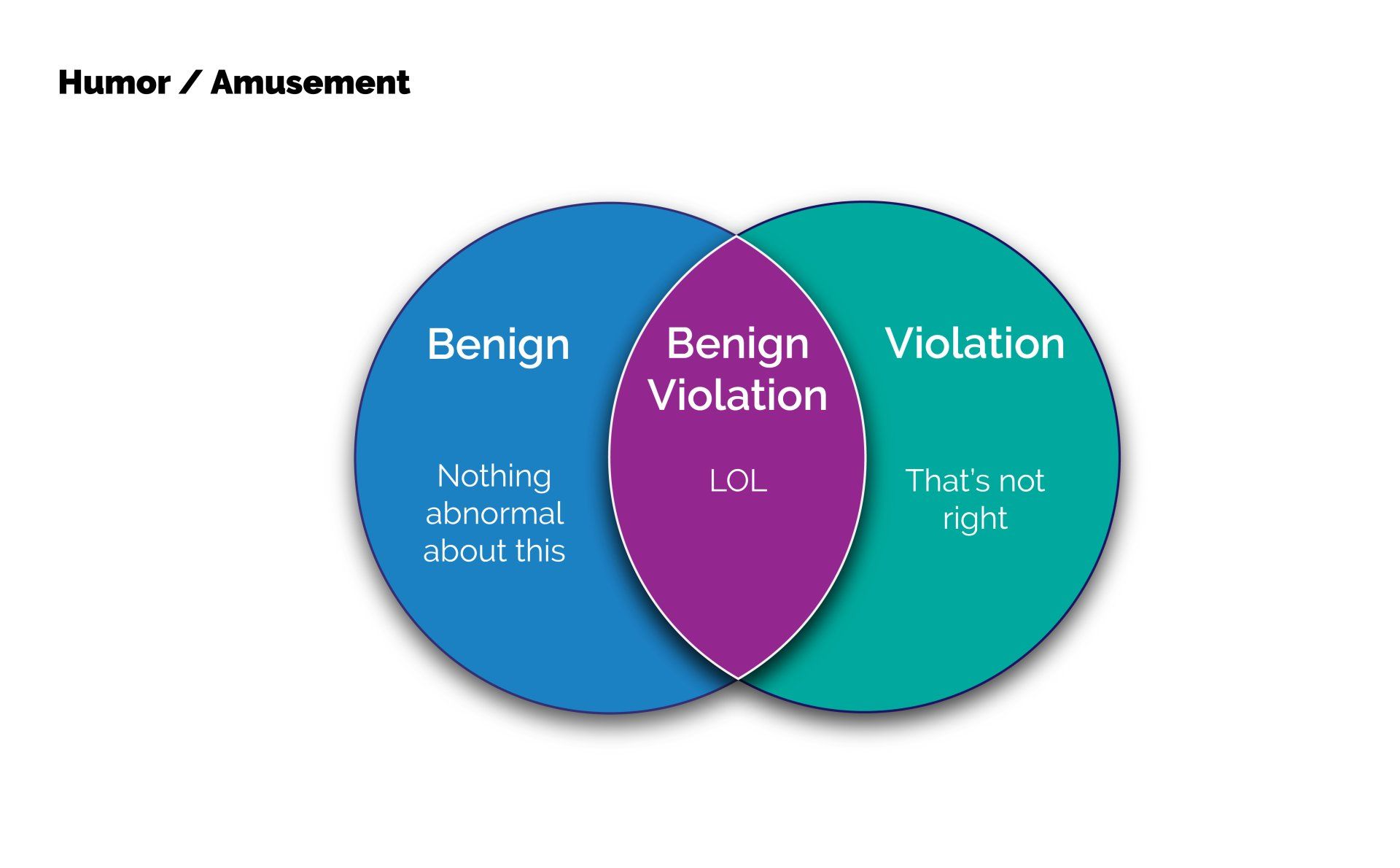
Slide title
Write your caption hereButton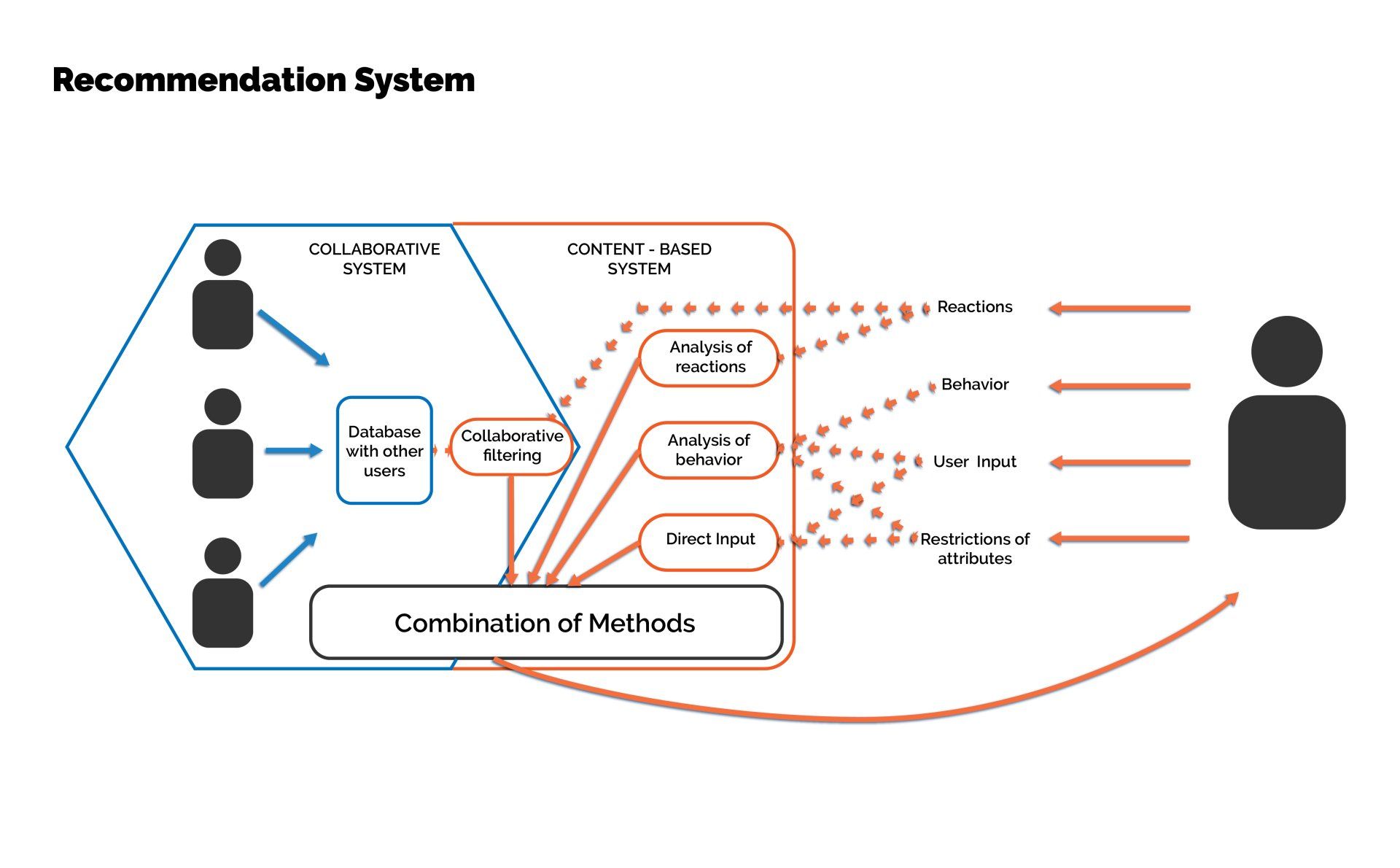
Slide title
Write your caption hereButton
Existing Practices of Humor in a Digital Space
I examined precedents from each of four topics, that reflected on a potential application of the stress, humor and A.I. research performed.New Paragraph
Watching Pros Prime the Audience and Time the Punch
Catching moments of spontaneous humor is virtually impossible to predict. To observe humor and laughing in real time I had to go to comedy clubs and improv theater, where there was the possibility of a joke "flopping".
Findings:
Stand-up comedians used stories and voices to paint a picture for their audience.
When expectation for a joke built up, a violation of the situation received more laughs.
Allowing time for audience to laugh was very effective.
Impersonations and characters used in improv received consistent light laughter.
Building Personas with Unique Stressors and Sense of Humor
To paint the full picture and maintain consistency I created two office worker personas with different types of stress and unique humor tastes .
Persona Stressors by Stage
Daily Activity Patterns
Personal Cultural References
Humor Profiles
The personas were placed in scenarios where they became stressed. The potential interaction and experience was then journey mapped. To show how variation might progress for unique humor preferences over time, I designed humor interventions at three stages of development nine months apart for two personas.
18 humor studies.
9 for each persona.
3 in each of the 3 format categories
language
games
characters
The individual humor AI became much more in tune with the user's stress cycles and indicators for predicting when a humor injection would be most effective.
Building Humor Studies
The next step was to develop what these humor injections would look like, and show how the ML Humor agent would evolve and improve over time.
The humor designs were explainable within ML criteria, safe for work, relatable, fresh and brief.
Reflections on making humor :
- funny concepts don't always translate to the screen well
- coming up with funny material is very humbling, because jokes tank sometimes
- a laugh now means a chuckle or smirk later
- suffer from over-thinking
- benefits significantly from discussion and riffing
Just as we have AI technology that can see far more from one medical image than the most experienced doctors, I believe AI can eventually be absolutely, sidesplitingly, hilarious....eventually.
You can't teach or learn funny. You have step in it and get it all over your shoe.

